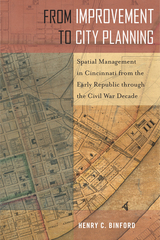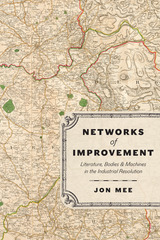
By engaging with subjects, the book not only enhances our understanding of intervention, but also uncovers the limitations of the concept. Katarina Kušić argues that the concept limits what we can observe and theorize, and it prevents researchers from engaging with the people living in spaces of intervention as coeval political subjects. As an alternative, she proposes to foreground improvement over “intervention.” This reorientation enables researchers to trace hierarchies beyond the local/international dichotomy, expands fields of visibility beyond those prescribed by interventions themselves, and seriously considers the contradictions at the heart of liberalism.

Corn is among the most familiar of grains; it is also one of the most mysterious. In this handsomely illustrated new book, Paul Mangelsdorf, perhaps the world's foremost expert on the corn plant, summarizes the work of a lifetime devoted to unraveling the enigma of corn.
This unique grain--it has no close counterpart elsewhere in the plant kingdom--exists only in association with man, and it survives only as a result of his intervention. Thus, the story of corn is in many ways a story about people. Combining the skills of scientist and storyteller, Professor Mangelsdorf in his search for the origin of corn takes the reader to archaeological digs in once-inhabited caves in Mexico and the United States Southwest, to the discovery of fossil pollen in drill cores taken deep below Mexico City, and to experimental fields where the great diversity of corn is revealed and where the plant is hybridized with its relatives teosinte and Tripsacum.
Drawing upon the evidence from botany, genetics, cytology, archaeology, and history, the author seeks to evaluate various hypotheses on the origin of corn. He concludes that the ancestor of cultivated corn was a wild form of pod corn; that corn may have been domesticated more than once in both Mexico and South America from different geographical races of wild corn; and that hybridizations between corn and its various relatives have resulted in explosive evolution leading to a diversity of varieties and forms unmatched in any other crop plant.
This is a book about corn, but it is a book for biologists, agronomists, anthropologists, and historians, and for the interested layman who would like to know something about the grain which, "transformed, as three fourths of it is, into meat, milk, eggs, and other animal products, is our basic food plant, as it was of the people who preceded us in this hemisphere."

From Improvement to City Planning emphasizes the ways people in nineteenth-century America managed urban growth. Historian Henry Binford shows how efforts to improve space were entwined with the evolution of urban governance (i.e., regulation)—and also influenced by a small group of advantaged families.
Binford looks specifically at Cincinnati, Ohio, then the largest and most important interior city west of the Appalachian Mountains. He shows that it was not just industrialization, but also beliefs about morality, race, health, poverty, and “slum” environments, that demanded an improvement of urban space. As such, movements for public parks and large-scale sanitary engineering in the 1840s and ’50s initiated the beginning of modern city planning. However, there were limitations and consequences to these efforts..
Many Americans believed that remaking city environments could also remake citizens. From Improvement to City Planning examines how the experiences of city living in the early republic prompted city dwellers to think about and shape urban space.

Working against the stubbornly persistent image of “dark satanic mills,” in many ways so characteristic of literary Romanticism, Jon Mee provides a fresh, revisionary account of the Industrial Revolution as a story of unintended consequences. In Networks of Improvement, Mee reads a wide range of texts—economic, medical, and more conventionally “literary”—with a focus on their circulation through networks and institutions. Mee shows how a project of enlightened liberal reform articulated in Britain’s emerging manufacturing towns led to unexpectedly coercive forms of machine productivity, a pattern that might be seen repeating in the digital technologies of our own time. Instead of treating the Industrial Revolution as Romanticism’s “other,” Mee shows how writing, practices, and institutions emanating from these industrial towns developed a new kind of knowledge economy, one where local literary and philosophical societies served as important transmission hubs for the circulation of knowledge.
READERS
Browse our collection.
PUBLISHERS
See BiblioVault's publisher services.
STUDENT SERVICES
Files for college accessibility offices.
UChicago Accessibility Resources
home | accessibility | search | about | contact us
BiblioVault ® 2001 - 2024
The University of Chicago Press









